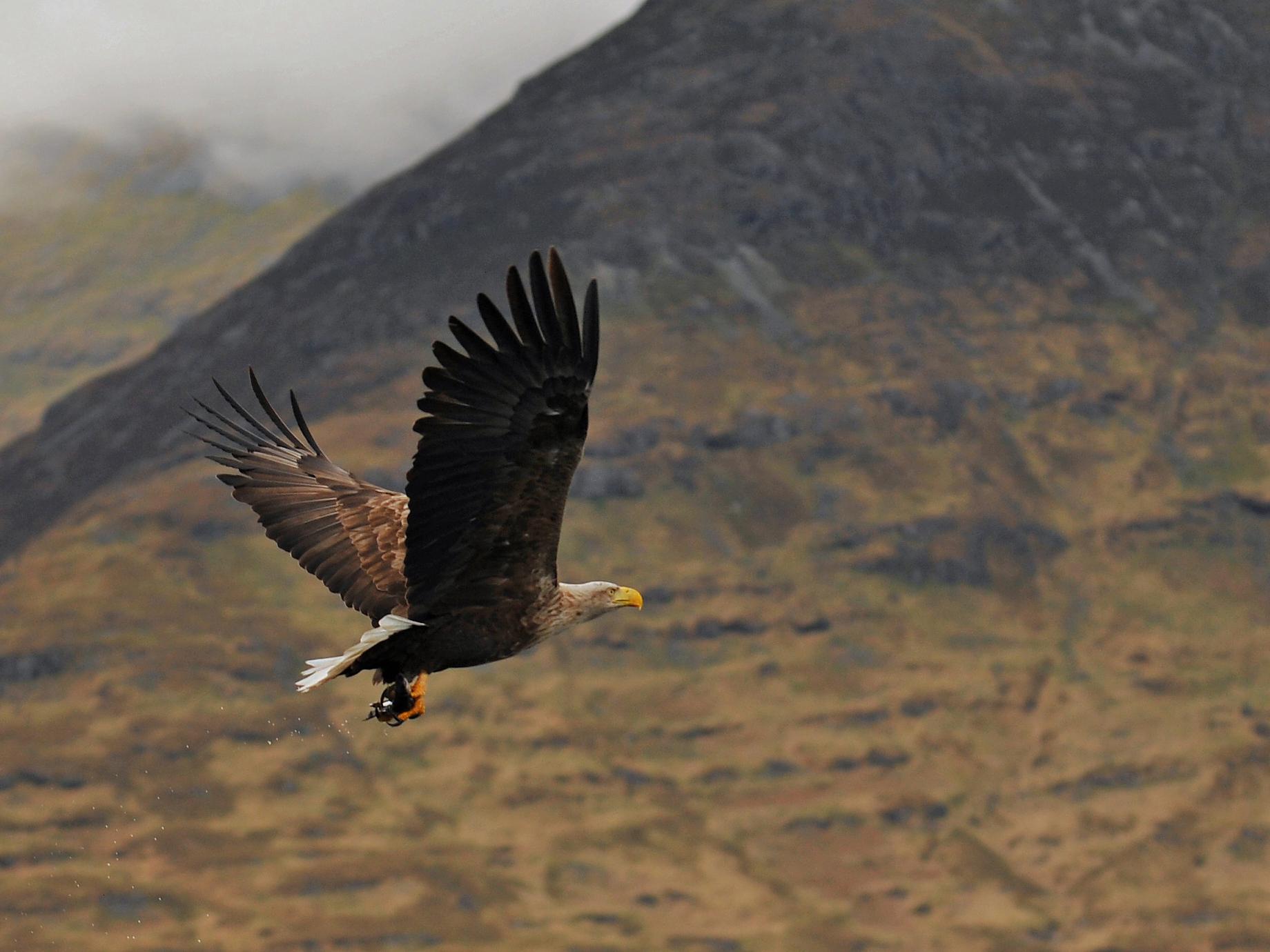Scottish farmers deploy laser beams to stop sea eagles eating their lambs
New measure being trialled to address concerns from farming community that birds of prey are attacking livestock

Farmers in Scotland will use laser beams to stop sea eagles attacking their flocks in a new trial.
Growing concerns about eagles preying on lambs have led Scottish Natural Heritage (SNH) to seek methods to deter the bird without causing them undue harm.
Those behind the plan hope the laser beams will disorientate eagles and prevent them from targeting livestock.
The technology is set to be trialled in Argyll, where farmers have come into conflict with eagles.
Sea eagles released at secret location
Show all 4Last year, a photograph showing a sea eagle in Argyll carrying a lamb in its talons brought long-running tensions to the surface.
“We recognise the serious concerns that some farmers and crofters have about the impact of sea eagles on their livestock,” said Ross Lilley, sea eagle project manager at SNH.
“The trial is about finding a balance between livestock farming and wildlife and recognising the benefits that each brings to us all.”
With a wingspan of nearly 2.5 metres, sea eagles are the UK’s largest birds of prey, and are sometimes referred to as “flying barn doors” due to their size.
The reintroduction of white-tailed sea eagles to Scotland has been described as “a genuine conservation success story” by Scottish Environment Secretary Roseanna Cunningham.
There are currently an estimated 160 breeding pairs inhabiting the region, and a report by the RSPB in 2016 predicted this number would increase to around 220 by 2015.
However, as conservationists have celebrated this success, farmers and crofters have countered with claims sea eagles are responsible for killing hundreds of lambs.
Such claims persist despite a previous report by SNH concluding “only minimal numbers of live lambs” are taken by sea eagles.
Sea eagles were declared extinct in 1918, following persecution by farmers and gamekeepers.
Now they are a protected species, but there are concerns farmers will once again resort to lethal tactics if their livelihoods are perceived as being threatened.
In the new trial, lasers will be shone onto hills and not directly at eagles, with the intention of preventing them from approaching flocks without harming the birds.
“We accept that non-lethal management approaches may assist with resolving conflicts with livestock, whilst also ensuring suitable safeguards are in place for a species, which rightly receives the highest level of legal protection,” said Duncan Orr-Ewing, head of species and land management for RSPB Scotland.
“An effective partnership approach is working towards shared outcomes.”
Other measures will also be trialled to resolve the conflict, including felling trees near lambing areas to prevent eagles from nesting there.
The National Farmers Union Scotland “welcomes the continued commitment of SNH and other organisations to find ways to reduce the risk of sea eagle predation of lambs and sheep”, said Andrew Bauer, the Union’s deputy director of policy.
If the new techniques are successful, they will be rolled out in other Scottish farming regions where the harmful impact of sea eagles on livestock has been demonstrated.
Subscribe to Independent Premium to bookmark this article
Want to bookmark your favourite articles and stories to read or reference later? Start your Independent Premium subscription today.

Join our commenting forum
Join thought-provoking conversations, follow other Independent readers and see their replies